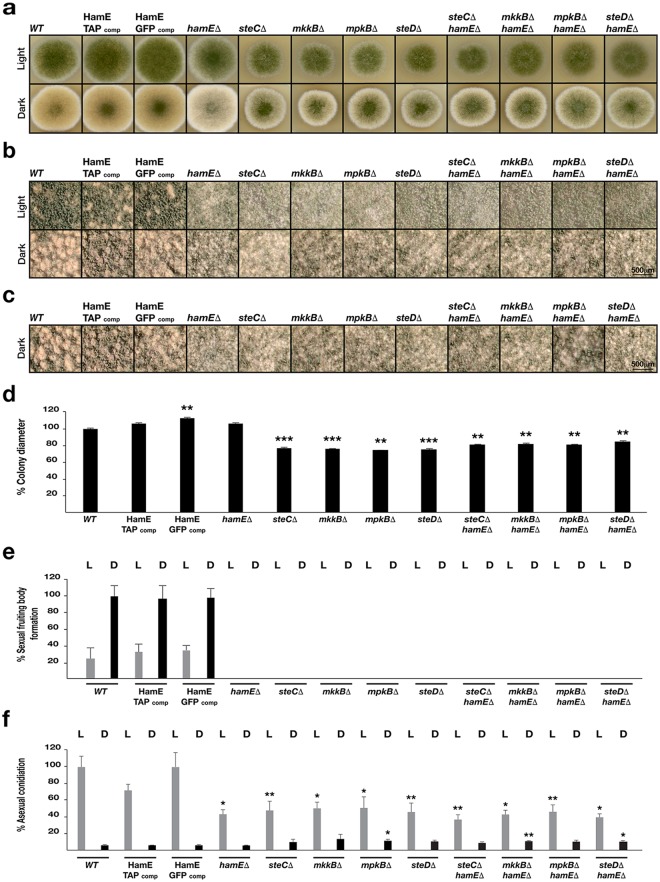Figure 2.
The pheromone module components and HamE are required for asexual conidiation and sexual cleistothecia production in A. nidulans. (a) Vegetative, asexual and sexual phenotypes of deletion strains. Strains were spot inoculated (5 × 103 spores) in triplicate on GMM plates containing supplements and induced asexually (4 days in the light at 37 °C) and sexually (5 days in the dark at 37 °C). (b) Close-up stereomicroscopic images of the strains from (a). Images were taken at 5x magnification. (c) Stereomicroscopic images of sexually induced strains taken at 8x magnification. (d) Graphical representation of the colony diameters of each asexually induced strain from (a) with respect to the AGB551 wild type strain. Measurements were taken from three independent biological replicates for each strain and the averages were plotted ± s.d. P-values were calculated by performing unpaired Student’s t-tests (**P < 0.01; ***P < 0.001). (e) Quantification of cleistothecia production in each strain. L = light, D = dark. Three 2x magnification images of each asexual and sexual replicate from (a) were taken and the cleistothecia were counted (N = 9). The averages were plotted ± s.d. as a percentage of the sexually-induced wild type average. (f) Quantification of asexual conidiation in each asexually and sexually-induced replicate (N = 3) from (a). Mean values were plotted ± s.d. as a percentage of the asexually-induced wild type average. P-values were calculated as described above (*P < 0.05; **P < 0.01), with light and dark-induced colonies being compared to the respective light and dark-induced wild type colonies.

